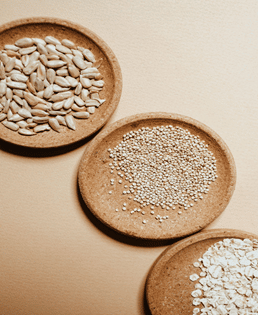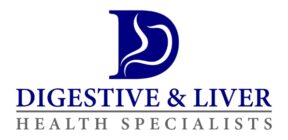Diverticulosis vs Diverticulitis?
Diverticulosis is a relatively prevalent condition, often described as pouches or pockets of the colon (large intestine). A lifetime of insufficient fiber intake is frequently the leading cause of diverticulosis. A diet low in fiber, and high in processed foods leads to high pressures in the colon walls, which gradually develops balloon-like projections that are weak microscopic areas in the colon wall, leading to diverticuli.
Diverticulitis, a relatively severe and painful condition, and occurs when these pockets become infected. Low fiber consumption may result in thin, complex, or small pellet stools, which is typically an indicator of high pressure in the colon. Furthermore, this increased pressure causes these pocket-like projections to expand and form diverticuli[1].
Dietary Guidelines
The following are dietary guidelines for those who have diverticulosis. Specific recommendations may vary according to the stage of diverticulosis from early to advanced. Additionally, guidelines will change for acute diverticulitis, in which the colon is healing from infection in the area of these pockets.
Stages of Diverticulosis
Diverticulitis
This is an infection and inflammation of one or more thin-walled diverticula. Early acute stages typically require fasting and bowel rest. Initially, physicians suggest a diet consisting entirely of clear liquids to maximize intestinal rest. As healing progresses, the diet is modified to a Low Fiber Diet, and gradually advanced to a High Fiber Diet upon completion of recovery.
Early or Moderate Diverticulosis
Diverticulosis is often silent and identified incidentally during routine colonoscopy for colon cancer screening. Once diagnosed, it is advisable to remain on a high fiber diet to prevent worsening of the disease and more importantly, to prevent diverticulitis. A voluminous stool assists in preventing these ailments, and that is why we recommend increased fiber intake. Fiber derived from plants, particularly insoluble fiber, is the best kind. These fibers typically don’t lead to increased intestinal gas production. Wheat bran, barley, and amaranth are some of the simplest fibers to consume.
Diverticulosis
In many older adults, diverticulosis has progressed to the point where the colon becomes stuck or twisted by fibrous tissue within the intestinal wall, just above the rectum. This is typically irreversible, and patients will often have to find a new normal in terms of stool consistency and abdominal health expectations. The difficulty here is that large stools are rarely formed, as the only type of stool that can pass through this constricted section of the colon is pellet-like, tiny stools and watery stools. Nonetheless, improvement can be determined by experimenting with small dosages of additional food fibers or supplements.
Water-insoluble Fiber
This fiber, sometimes referred to as roughage or bulk, is insoluble in water but, paradoxically, retains moisture in the large bowel. As a result, a bulky and mushy stool is created. It increases regularity and appears to be connected with a decreased risk of colon cancer and colon polyps. We hypothesize that this is because cancer-inducing chemicals are swept more rapidly through the gut with the aid of this fiber. Additionally, insoluble fiber may aid in weight loss and improve diabetes control. Insoluble fiber-rich foods include the following:

- Wheat bran
- Baked products made entirely of whole wheat
- Veggies and fruits, particularly the skins
- Peanuts
- Brazilian nuts
- Popcorn
- Brown rice
Water-Soluble Fiber
This plant fiber is water-soluble. It supplies food for many bacteria that grow in the colon, giving numerous health benefits. Additionally, soluble fibers promote regularity by promoting intestinal bacteria growth. The following foods are high in soluble fibers:
- Oatmeal in any form – muffins, cereals, etc.
- Fruits and vegetables: apples, oranges, grapefruit, peaches, and concord grapes
- Pears, prunes, and cranberries
- Beans
- Beets
- Carrots
- Sesame seeds
- Seeds, Nuts, and Popcorn
In the past, physicians have advised patients with diverticulosis to avoid certain foods such as seeds and nuts. This is no longer widely viewed as a requirement. Nuts and seeds are typically high in fiber, which helps to improve colon health. As a result, physicians now typically advise consuming nuts, seeds, and popcorn to patients with diverticulosis. This recommendation is supported by a recent study of 2,007-patients. Patients with diverticulosis who consumed these foods were matched to those who did not. Interestingly, those who consumed nuts, seeds, and popcorn experienced fewer diverticulosis complications than those who did not [2].
Prebiotics
Prebiotics are a relatively new class of plant fiber that has been shown to cause favorable colonic alterations. These are found in various plant diets and prebiotic products. Diverticulosis patients may benefit from a variety of soluble fiber meals and supplements. However, if taken in excess, they can cause increased intestinal gas. If caught behind a constricted diverticular colon, cramping and bloating may occur. The recommendation is to begin with small amounts of these beneficial fibers and gradually increase them to control the development of unwanted side effects.
Summary
Diverticulosis is a Western diet-related illness that has increased in prevalence due to the increased consumption of processed foods and animal products, along with a lack of healthy plant foods and fiber. Increased fiber consumption is beneficial at any stage, but especially during the early stages of this disease. Fiber helps to decrease colonic pressure and aids in a more regular, softer bowel pattern. In the long run, increased dietary fibers, particularly prebiotic fibers, can confer many great health benefits [3].
References
[1] A. E. Thompson, “Diverticulosis and Diverticulitis,” JAMA, vol. 316, no. 10, p. 1124, Sep. 2016, doi: 10.1001/jama.2016.3592.
[2] C. J. Wright, "Fibreless diet and diverticulosis," Can. Med. Assoc. J., vol. 116, no. 9, pp. 978, 981, May 1977.
[3] K. W. Heaton, "Diet and diverticulosis--new leads,” gut, vol. 26, no. 6, pp. 541–543, Jun. 1985, doi: 10.1136/gut.26.6.541.

